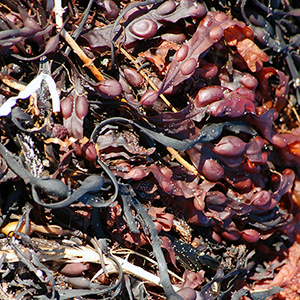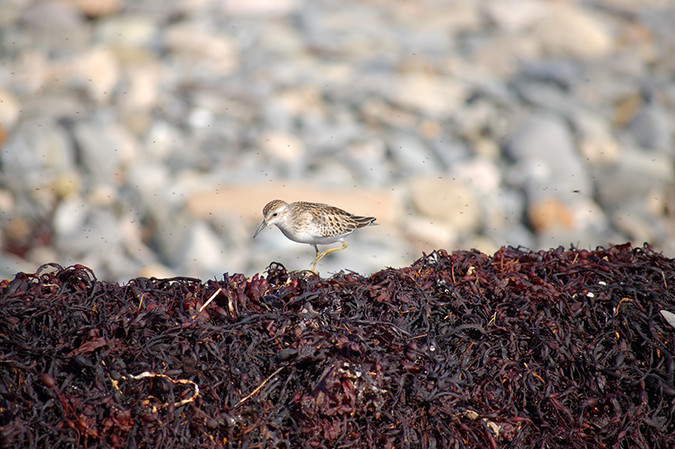The Wrack
The Wrack is the Wells Reserve blog, our collective logbook on the web.
The Wrack is the Wells Reserve blog, our collective logbook on the web.
 "That seaweed is disgusting. It's ugly, it smells, and it's covered in flies. Why don't you do something about it?"
"That seaweed is disgusting. It's ugly, it smells, and it's covered in flies. Why don't you do something about it?"
I can only imagine the phone calls fielded by beach managers from York to Biddeford this summer. I'm sure they got an earful. Southern Maine's tourist magnets, our beautiful sandy beaches, got turned into algae dumps in July. Popular sun-bathing spots were piled high with twisted mounds of seaweed. Vacationers were none too pleased.
Peeved visitors took to social media to vent their frustration. Empathetic local officials tried to explain. The press pounced.
By and large, reporting was solid and balanced (kudos Deborah McDermott and Gillian Graham), but coverage of the kerfuffle over surf-cast Fucus (and kin) tended to restrict discussion of ecology to the seaweed itself. That ignored the role of wrack in the beach environment.
The biological beach blanket is hugely rich in nutrients. Ask a gardener. When rockweed and kelp and dulse break down on beaches, they feed dunegrass and other land-based plants that are crucial for naturally strengthening the dune system.
The algal bonanza is appreciated by beach flies and sand fleas and the spiders that eat them, and all that buggy biomass is good for birds. Sandpipers and plovers staging on the Maine coast during their southward migration feast on bountiful invertebrates while keeping an eye on the sky for peregrine falcons and merlins that would happily take this food web to another trophic level.
The wrack is an "ecological treasure trove" as well as a thorny beach management issue. At the reserve's Laudholm Beach, take the time to look at the wrack community and appreciate its unique contribution to a complex environment.
Welcome to Maine. The way life should be.

Postscript
It was bound to happen: